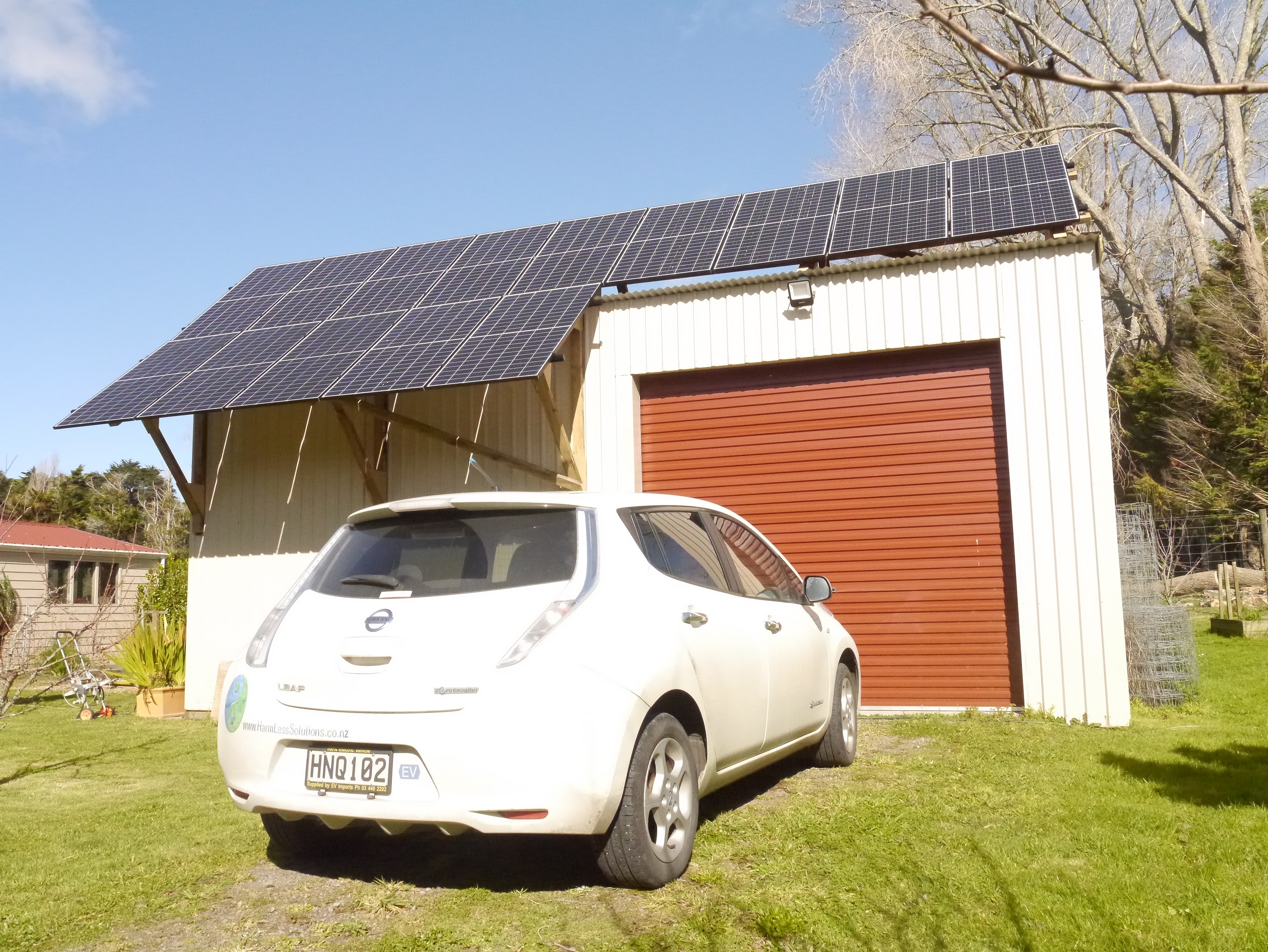Solar generation - Our update
Tuesday 19 April 2022
Back in 2015 when I posted the last blog on PV our installation which was rated at just over 5kW had cost us about $31,000 and as our electricity supplier slashed the price it paid us for any excess generation that we sent their way we purchased a Nissan Leaf EV to make better use of our ‘cheap’ electricity. Our Leaf is now 10 years old so its battery capacity has declined to around half of what it was back when we got it in 2014 so we’re investigating replacing the battery pack which is now becoming an economically viable option as some very tech savvy businesses here in New Zealand see that as an opportunity and rise to meet that challenge.
So, 2022 sees us on a different small rural lot and with a recently completed 5kW PV installation. 24 panels last time has reduced to just 14 now, still feeding through a string inverter and grid tied but with the addition of a Paladin ‘power diverter’ to maximise our consumption of our own generation rather than export it to the grid as much as possible. We again do not have battery storage in our installation but rather the Paladin unit works by monitoring electricity flow in and out of our property and when export is detected it switches on the hot water cylinder to effectively use it as a storage device (‘battery’) with that ‘surplus’ electrical energy being stored as heat and of course absolutely minimising our hot water heating costs. The all up cost has been less than half that of the installation at our previous property which is an indication of the rapidly declining cost of PV technology. The decision to not include a (Li-Ion) battery in our installation is due to the high percentage of self-consumption we are capable of making this higher investment cost uneconomic.

The other storage we have at our disposal is in the form of our Leaf which effectively is a battery on wheels which we are able to charge during daylight hours due to our both now working from home so most of our EV driving is powered by sunshine. It is a nice feeling to be self-sufficient in ‘fuel’, especially as petrol prices continually climb due to international events. Our fall-back source for (winter) charging is by scheduling it to coincide with Ecotricity’s cheaper off-peak supply rates.
Recently we have made plans to replace our long owned Commodore station-wagon with a second EV which will be capable of out of province trips and trailer towing. So our trusty Holden will soon be pensioned off in favour of a Polestar2… watch this space! Proof of the claim that once you drive electric you don't go back.
Completion of the PV installation was just a couple of months back so we’re still fine-tuning our daily activities to make best use of our generation. A crucial part of the connection of the PV to our electricity supply was to ensure our various household circuits were allocated optimally in regards to our 3-phase electricity supply. To limit the cost of our PV componentry, and particularly the inverter, we opted for a single phase PV set-up which means that our PV generation feeds onto the grid through only one of our two incoming phases. In doing so we have created the situation where it is possible for us to simultaneously import electricity through one phase while wastefully exporting excess generation through the phase that the inverter is connected to. We therefore rearranged the various circuits on the fuse board so that our typical daytime usage matches the phase that the solar inverter feeds into. This means that our EV charger, house water pump (as we’re rural), kitchen benchtop appliances, freezers and of course the Paladin controlled hot water cylinder are all now on the phase that is fed from the PV. Our aim is as per my earlier PV blog to maximise ‘self-consumption’ of our own generation for the same reasons explained back then.
So far our monthly electricity bill is running at about $80-$90, compared to $220+ prior to the installation of the PV. It is worth noting that amount includes charging the Leaf and that our home is heated by logfire. Prior to embarking on our latest PV installation we ‘crunched the numbers’ using EECA’s solar calculator which suggested an approximate 11 year payback period for our PV investment. Based on the savings we’re seeing 11 years seems pessimistic but the calculator doesn’t include input of EV charging so we are likely to improve on their results for our situation for that reason.
If you are considering installing PV at your home or business we recommend researching your design carefully and enlisting a reputable installer when doing so. The technology involved in PV and the rate at which it is progressing make it essential that your installer is ‘up to speed’ in this field, especially as the popularity of home generation increases and less than expert tradesmen see it as an opportunity to make a fast buck. Feel welcome to drop us a line if you want to make use of our experience in this.

